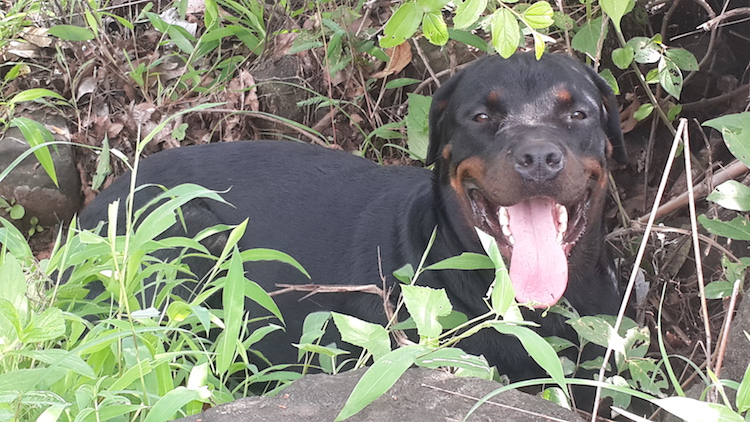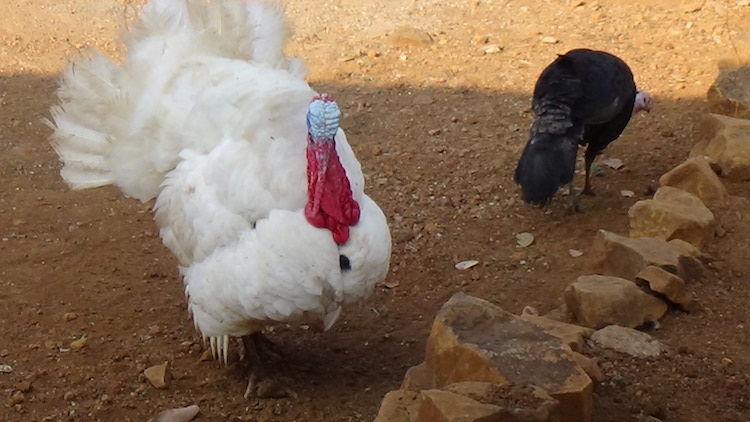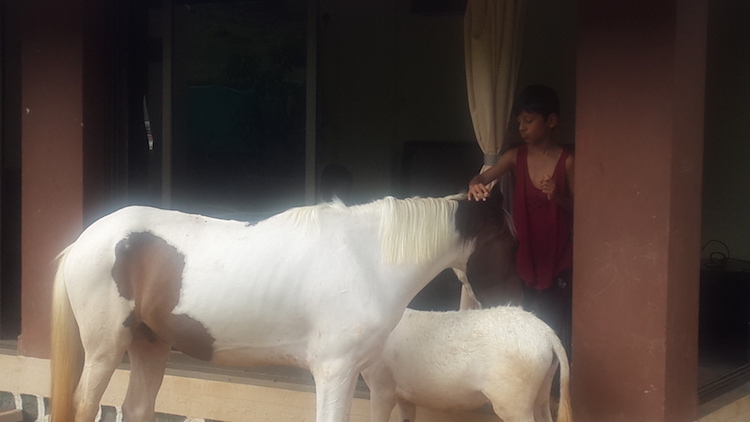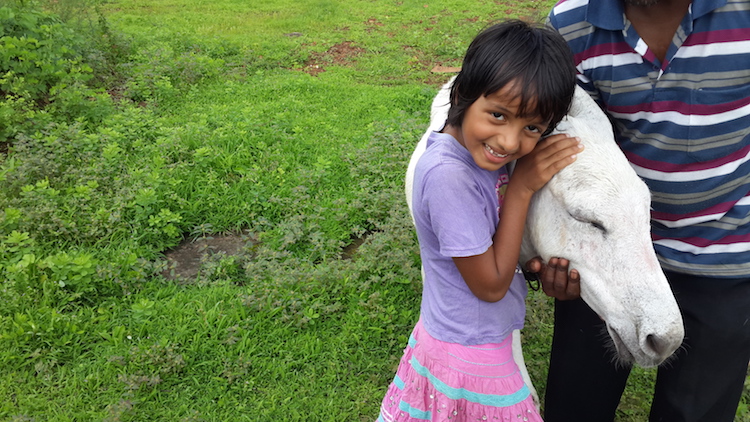Today in Mumbai, as I observe my children’s friends, I am appalled at how distanced and detached the kids seem to be from animals, even pets.
I see kids who who have been conditioned to not feel any natural or instinctive connection to their pets.
We are quite an anomaly in this “sanitised-from-animals” city of ours. We have a farm full of them in the outskirts that we visit and nurture twice-a-month. Over the years of having this connection with nature, there are many lessons my children have learned that are not only inspiring for us but also worth learning from.
There are lessons to be learned from animals, whether they are wild or domestic. I share these lessons with you now, along with personal stories attached to them, in the hopes that you resonate with the lessons our animal brethren have to teach us:
1. Children identify with birds and animals, if you let them. They have a natural attraction and understanding of the ins and outs of the animal and bird kingdom. There is a small part of them that yearns for the freedom animals have to live their lives just as they please.
Every morning, when my daughter sits at the breakfast table, her eyes search the clear horizon outside our french windows. She is looking for “our” crow who turns up expectantly each morning, waiting for a morsel of egg yolk from her. The days he doesn’t show up, the eggs don’t get eaten, but thankfully those days are rare. The crow shows her what true freedom is and how it has a choice each day to visit us.
2. Children learn to nurture and care for those who are weaker than them, or those who depend on them for survival. This doesn’t have to be taught to them, they just know it. This is quite different than most of us, who lose this natural instinct as we grow older.
Our crow is easy to identify because she has a growth under her beak the size of a golf ball. One morning, we saw her fly to the building across from us with the egg yolk firmly secured in her beak. We then saw her feed it to a smaller, delicate crow, and knew at once, that this was her baby. From the very next day, we began to feed her for two. We knew that feeding them both would help ensure their survival.
3. In the fast-paced world our kids are born into today, animals teach them about timelessness and being completely present in the moment. This stays with them even as young adults and keeps them child-like forever. They gently experience stability and responsibility—gently. They accept the “musts” in life with forberance and magnanimity.
We have a pet Rottweiler at home named Lola. Lola gets walked each evening by the kids irrespective of whether they have homework, hobby classes or are just plain tired. Having a pet shows our children what responsibility is.
Lola begs, cajoles and demands their attention. Many evenings are spent with Lola and the kids sprawled on the floor: entwined, playful and engaged. Some days she is dressed up as a ghost, other days she is an imaginary giant; lately she has even been Chewie, from Star Wars. Light saber wars are held, tag is a usual pastime and sometimes when she needs to be reprimanded, it is done with adorable acceptance. Lola shows the kids that they are responsible for giving her a happy and healthy life.
4. Animals put the evolutionary process of species reproduction into scientific and relevant perspective. Through their experiences, children learn naturally about sex, babies, pregnancy, menstruation and reproduction without any embarrassment or awkwardness. It is amazing how easily they make parallels between humans and animals and come to conclusions that are logical and matter-of-fact. All we have to do is listen and gently nudge their enquiry in the right direction.
Lola first went into heat at eight months. It lasted an entire month. We had to read up on the right care for her during that time. We also had to answer 20 questions from the children about why is it happening, how does it work, is she fine or sick, etc. This dialogue opened a natural window to discuss fertility, reproduction, gender differences in males and females and of course it peaked their curiosity about how this translates for them. Before I knew it, our first sex-education talk was done! On top of that, it felt natural and effortless.
5. Handling change is not easy for most of us. From animals, children learn tolerance to change with an open mind that allows room for all outcomes.
We visit our farmhouse every fortnight on the weekends. At the farm we have dogs, turkeys, hen and roosters, geese and ducks, a horse and a donkey. The two turkeys are the newest additions at the farm. As they were introduced to the other animals, the kids were concerned about their well-being and how they would handle the change in lifestyle and living conditions. We had many long discussions on taking the right measures to ensure that they settle in well.
6. It is important to be wary of animals, but it’s just as important to overcome baseless fears. As we become adults, it gets harder and harder to make light of our fears. In childhood, it is much easier.
The first time my son rode our horse Carlos, he was wary. Carlos is adopted and we had no idea about his previous owners, life or living conditions. We knew from his temperament though that he had been ridden before. Gentle encouragement from us made my son overcome his reservations so that he could enjoy the ride without fear riddling his mind.
7. Caring for our environment and doing our bit to maintain Earth’s ecological balance cannot be taught through documentaries and learning resources alone—however well-made they may be. Animals, when adopted, force us to acknowledge our food choices and how they affect our environment. With compassion, they strike the right balance for us.
My son recently went to an overnight school camp. After he returned, he told me that he had decided that he would not eat any animals during the trip. We are not vegetarians, we encourage some poultry and fish in our children’s diets regularly, so this came as a real surprise to my husband and I. He had no problem reverting back to his food habits once he was back from the camp, but the experience of making that choice from within empowered him to make his own decisions about the type of food he eats, which stayed with him for a long time.
Here are a few more pics of some of our furry friends:



~
Author: Madhuri Kudva
Apprentice Editor: Alex McGinness / Editors: Travis May
Image: Author’s Own











Read 0 comments and reply